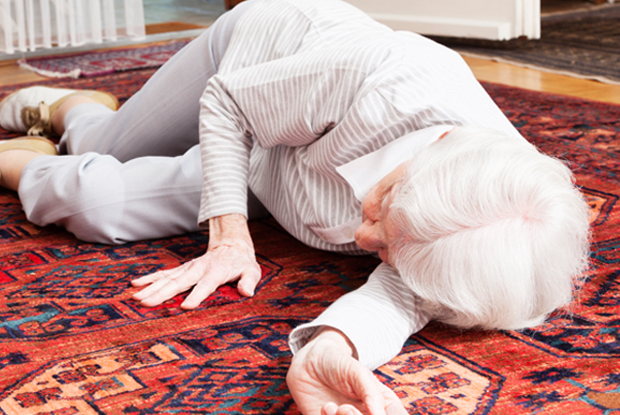The most common source of fatal and non-fatal injuries to seniors is slips, trips, and falls. An estimated 2.8 million seniors in the U.S. are treated in emergency rooms every year for fall-related injuries, and 27,000 die annually from injuries sustained from falls.
When a senior citizen suffers a fall, it can threaten their independence, mobility, and safety because it takes them longer to heal and regain mobility after such an accident. Brittle bones and osteoporosis also play a factor in hip and femur fractures resulting from falls.
These are the bare facts:
- One in four seniors experiences a fall every year.
- Every 11 seconds an older adult is treated in the emergency room for a fall.
- Every 19 minutes an older adult dies from a fall.
- 800,000 seniors are hospitalized every year from falls.
The above information was gathered from four sources: The Agency for Healthcare Research and Quality, the American Physical Therapy Association, the National Council for Aging and the National Council for Aging Care.
Fall prevention
One way to prevent falls is to continue exercising and doing activities that increase strength, flexibility, and balance. Some good exercises to consider include yoga and tai chi, which entail a mix of stretching, muscle strengthening, and balance exercises. Also, bicycling is a great sport to engage in to keep your legs strong – and your cardiovascular system strong, to boot.
Here are other precautions that seniors can take to reduce the likelihood of a fall:
- Review the medication you are taking with your physician or pharmacist. Some medications can make you dizzy or drowsy and if any of your meds do, discuss possible alternatives.
- Make sure you are taking in the daily recommended levels of calcium and vitamin D to avoid osteoporosis.
- Ensure you don’t have furniture that impedes your motion and is too close together.
- Attach double-sided tape to the bottom of rugs on smooth surfaces, so they don’t create a slipping hazard.
- Don’t leave things on the floor or stairs.
- If you have any loose or uneven steps, fix them.
- Install handrails on your stairs and make sure any existing rails are secure and not wobbly.
- If you use a ladder for any chores, always make sure that you have three points of contact (two feet and a hand, or two hands and a foot).
- Consider subscribing to a medical alert system that you can activate in case you fall, and which notifies emergency services or nearby family members.
- When sitting or lying down, rise slowly.
- Use non-slip mats in your shower or bathtub; any shower mats should also be sticky so they don’t slip on your linoleum or tile flooring. If you often feel unsteady, consider installing grab rails in your shower.
- Install a nightlight in your bedroom so that if you need to get up when it’s dark, you can see.
What to do if you fall
If you do not have a medical alert system, you should take your time to try to get up. Try to assess the situation to make sure you didn’t break or sprain anything.
Steady yourself on a solid piece of furniture as you attempt to get up. If you are in pain and decide to try to get up, roll to one side, and then slowly pull yourself up on all fours until you are on your hands and knees. If there is no sturdy object nearby, try crawling on all fours to one so that you can use it to support your weight as you stand up.
Put your stronger foot down first and, if you can, rise slowly to a sitting position on the object. Stay sitting until you feel you can stand up without falling again. Take one step at a time.
If you feel you need medical aid or family assistance, call for help. If you have fallen, it may be a good idea to pay a visit to your doctor to see if you sustained any damage, because sometimes injuries do not show up immediately.
Finally, keep your cell phone in your pocket at all times. Mobile phones have become a lifesaver in that if you have one on your person, you can easily call for help.
Additionally, Apple now includes a fall detector on its watches, which connects directly to an iPhone and can alert emergency services if needed.

